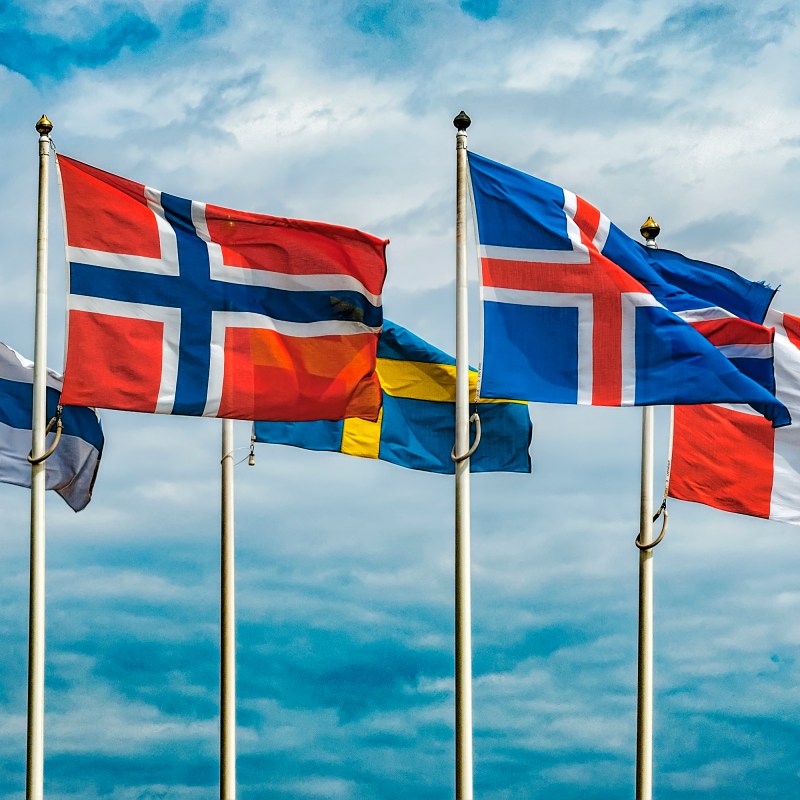
Scandinavia is one of Europe’s most alluring regions.
Videos by TravelAwaits
While fans of beaches and endless sunshine are usually wooed by the Mediterranean, the opposite pulls people toward the Nordic countries of Northern Europe.
From spying on the northern lights to speeding through the powdery snow on a dog sled to sampling delicious treats with never-before-tasted berries, Scandinavia offers charm and thrills in equal measures. It’s not hard to see how some nations end up on the list of the world’s happiest countries year after year.
That being said, Scandinavia is more diverse than many think. Each country is home to its own idiosyncrasies, traditions, must-see destinations, and cultural practices.
Aside from more intangible characteristics, they’re also different when it comes to currencies, language, and other important topics.
In other words, before you plan your trip across Scandinavia and Northern Europe, you might want a little breakdown of each country in the region. First up, let’s cover the difference between terms like Scandinavia and Nordic, then we’ll dive into country-by-country fact sheets.
Nordic vs. Scandinavian countries
Let me start off by saying the terms Scandinavia and Nordic are a hot topic for Northern Europeans—just take a look at this Reddit thread for proof. I’ve personally heard many different takes on what is and isn’t Scandinavian and Nordic, and I’m sure the same will be true for you when you head to these countries.
As always, locals are the authority on who they are and aren’t, and I’m not Scandinavian or Nordic—but let me humbly attempt an introduction here.
Scandinavia is a geopolitical term that describes the countries of Iceland, Sweden, Norway, and Denmark, which are also part of a shared language group. Finland isn’t technically considered a Scandinavian country because it’s not part of the Scandinavian peninsula or the language group.
That being said, these five nations share the same Nordic cross on their flags, which makes them easy to identify. Greenland and the Faroe Islands are Danish territories, so they’re sometimes included as part of Scandinavia—but that’s not always the case, as with Iceland and Finland.
The term Nordic, by contrast, describes the shared culture in this region. Nordic is often used when discussing history and religion, as well. Norse mythology, for example, was widespread around Scandinavia—but also bled into areas like Scotland and Northern England, which is why we use the term Nordic instead of Scandinavian. (Scandinavia is geography, making it ‘fixed’.)
Nordic peoples originated in mainland Europe before crossing the Baltic Sea into Northern Europe. Originally, the far north regions were occupied by the Sámi people.
Sami people still live throughout Scandinavia and Finland (and in Russia), but are not Nordic. Instead, they’re the region’s indigenous peoples—and Europe’s only official indigenous group.
Other important information for Scandinavian countries: sockets, currencies, & the EU
Culturally, it’s easy to get turned around when talking about Scandinavian countries, Nordic countries, and Northern Europe. Again, a trip to any of these countries will give you hands-on experience on how to differentiate the region based on a variety of factors.
For now, let’s zero in on what’s going to impact your trip the most: knowing which currencies and electrical sockets these countries use, along with whether they’re part of the European Union.
Here’s the good news: in terms of electrical sockets, all Nordic countries use the F Socket, which is standard throughout most of Europe. You can also use the C Socket in many places.
Here’s the bad news: all Nordic countries have a different currency, which I’ve listed below. They’re easy to change as you move between countries, but still a bit of a pain.
On top of that, not all countries are part of the EU, meaning you might need to go through customs. That’s probably not the case because the Nordic countries share a Nordic Passport Union and all Nordic countries are part of the Schengen Zone, meaning the borders are kept open.
At-a-glance breakdown
Denmark (including overseas territories of Faroe Islands and Greenland)
- Capital city: Copenhagen
- Currency: Danish krone (DKK) but some businesses in urban areas also accept the euro
- Member of European Union: Yes
Finland
- Capital city: Helsinki
- Currency: Euro
- Member of European Union: Yes
Iceland
- Capital city: Reykjavik
- Currency: Icelandic krona (ISK)
- Member of European Union: No
Norway
- Capital city: Oslo
- Currency: Norwegian krone (NOK)
- Member of European Union: No
Sweden
- Capital city: Stockholm
- Currency: Swedish krone (SEK)
- Member of European Union: Yes
